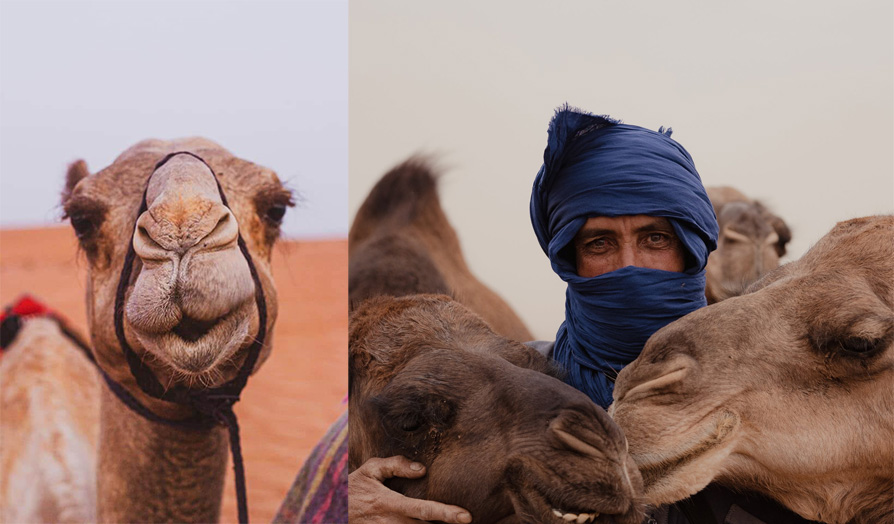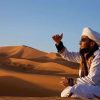Many of you want to know more about this iconic animal when you book a ride on their backs. Some of you are even quite worried about the way they are treated (walks in the heat, weight of a human on the back …) So we decided to write this article to allow you to learn more about camels in general and to understand how we take care of them, especially at Dunes & Desert.
Camel or dromedary?
First of all, the dromedary has only one hump, while the camel has two.
The specie that is commonly known as the camel is native to Asia, while the dromedary comes from Africa, and is also called the camel of Arabia (Camelus dromedarius).
So when you take a ride with Dunes & Desert, you are on a dromedary!
Filled with fat, the hump allows the camel to travel long distances without having to drink and feed. It’s a kind of reserve. The camel is able to travel 60km per day, using only its reserve of fat. If the camel has not been fed for a long time, we can see its hump fall to the side, as the energy stock runs out.
The dromedary is adapted to the climate of hot deserts (Sahara, Arabian Peninsula …), while the camel lives in the colder deserts of Asia (Mongolia and China). The camel, therefore, needs a lot more energy because it has to deal with heat and cold, which is why it has two bumps it. Moreover, initially, the dromedary also had two bumps, but they merged over the course of evolution. Incredible, no?
Fun facts about camels
The size of the camel is from 2.20m to 2.50m at the withers and its weight varies between 400 and 1100 kg depending on the breed. It is herbivorous and can live on average up to 25 years.
The camel has very long eyelashes to protect it from sandstorms in the desert. They are also able to close their nostrils for the same reasons.
He has thick, strong lips that allow him to eat thorny plants without hurting himself.
The camel has a wide, elastic foot without a shoe, perfectly suited to walking in the sand.
The males drool a lot during the breeding season, it is how they charm the females.
The female gives birth to a single pup, and the gestation lasts 15 months.




